I’m spending too much time on social media. I scroll past the seemingly perfect lives of friends traveling to cool countries on Facebook, I “heart” the filter-lovin’ fashion influencers on Instagram, and I pin pricey home renovations on Pinterest. I once viewed a 15-minute makeup tutorial on YouTube, but got lost when the beauty guru baked, strobed, bronzed, and contoured her face with $350 worth of makeup. Since I don’t know what any of that stuff is, I decided I don’t need it on my face. But yet, I kinda wanted it anyways.
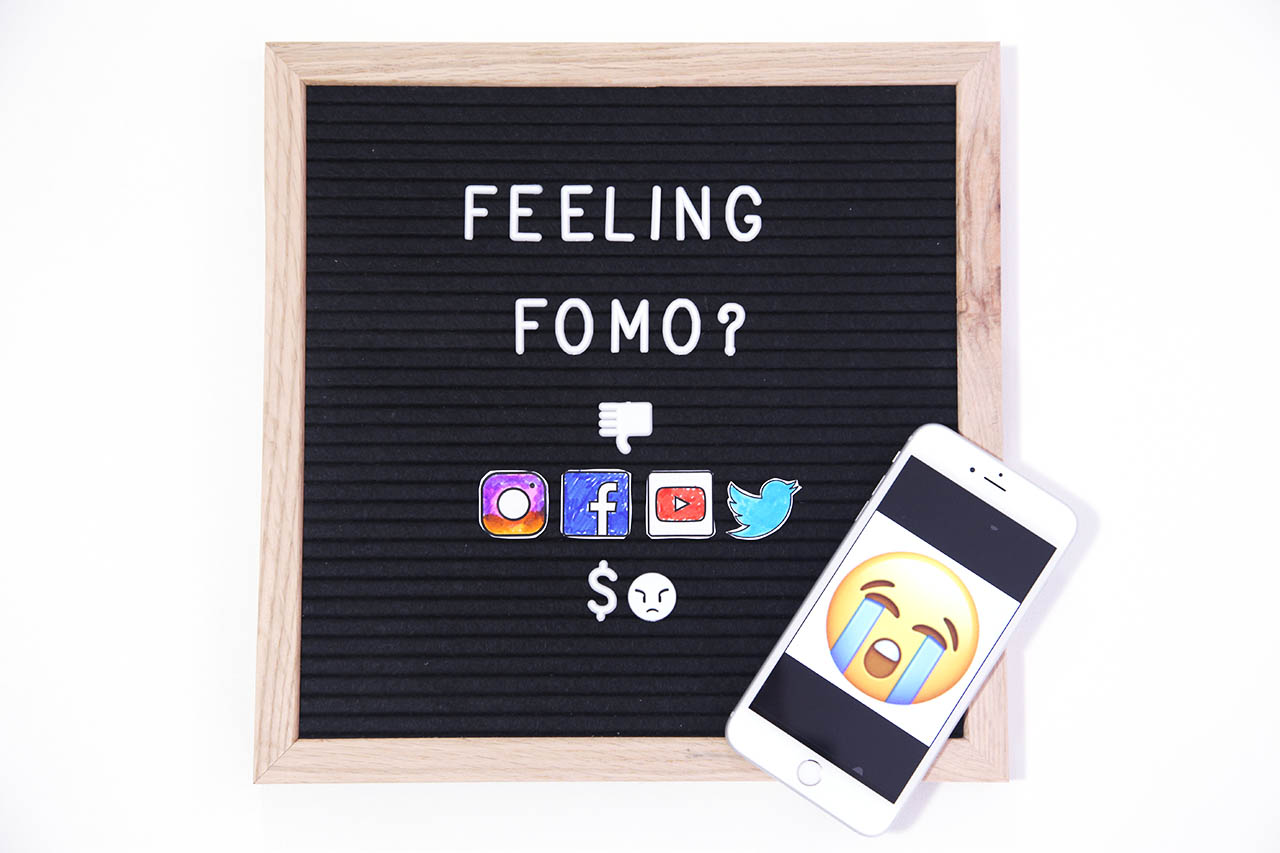
I know why I’m addicted to scrolling through other people’s lives – it’s because no one really lives this way in reality. Sure, I’m enticed by the flashy stuff and exotic travels of the online Filter-ati, but when I see filters imposed over social images, I can’t help but peek under the surface and add up the cost. Are we buying what our friends and brand influencers are selling? Yeppers.
#brokeAF
Social media lures you to spend, and the cost is real. After studying nearly 700 million shopping sessions across leading retail sites, the e-commerce consultancy group RichRelevance found that Pinterest users spend $170 USD on average per order – that’s about double what Facebook and Twitter users spend. Hashtag #brokeAF.
If you’re checking your social feeds anywhere near the global average of 135 minutes per day, chances are you’re dropping some serious coin. The leading culprit is an emotional state called the Fear of Missing Out (FOMO). Here’s how FOMO wires you to spend and how to beat the online urge to splurge.
Fear of Missing Out #FOMO
The fear of missing out, or FOMO, is the new way of Keeping up with the Joneses. But unlike the Joneses next door, today’s FOMO feeds you a 24/7 global stream from a curated group of friends, celebrities, and influencers who eat brunches, buy gadgets, and wear luxury clothing – so it’s not like glancing into your neighbour’s yard and just seeing a well-kept lawn. The endless stream feels real and it feels awful.
Social media gives you a front row seat to everyone’s highlight reel. This intimate view can bring twinges of jealousy and even lead to feeling emotionally gutted when your modest lifestyle appears inferior to the aspirational online collective.
Perhaps the hardest way social media influences spending is through peer pressure. In a recent survey, Allianz Life found 55 per cent of millennials have experienced FOMO, and 57 per cent say they spent money they hadn’t planned to because of what they saw on social media.
Behavioral scientists and psychologists often deem when we compare our lives to others as “relativity bias” and/or “social comparison theory”, where we determine our personal worth based on how we stack up against others. So basically, if you want to feel underpaid, under-accomplished, unattractive, and unawesome at everything in life — despite the reality that you’re awesome at a lot of things — then scrolling through social media is the perfect tool for feeling like $hit.
As an aside, I would highly recommend Dan Ariely’s book, Predictably Irrational: The Hidden Forces That Shape Our Decisions where he explains (in a fun way) relativity bias and how to better deal with having an irrational human brain. Yes, we all have an irrational human brain.
All generations FOMOed
While millennials are hardest hit, the FOMO phenomenon spans all generations, genders, relationship statuses, and income levels. I’m Generation X, BTW, and I feel the dreaded FOMO too, so you’re FAR from alone. I talk about my FOMO on the television show Finance is Personal, and there’s video proof of me getting real with my FOMO!
In a FOMO-specific survey of 900 Canadians by RateHub, a mortgage comparison site, 25 per cent said FOMO is their main motivation to shop and 70 per cent believe that close to one quarter of their debt is from FOMO overspending. So if you carry a $4,500 credit card balance, then $1,125 would be attributed to FOMO purchases.
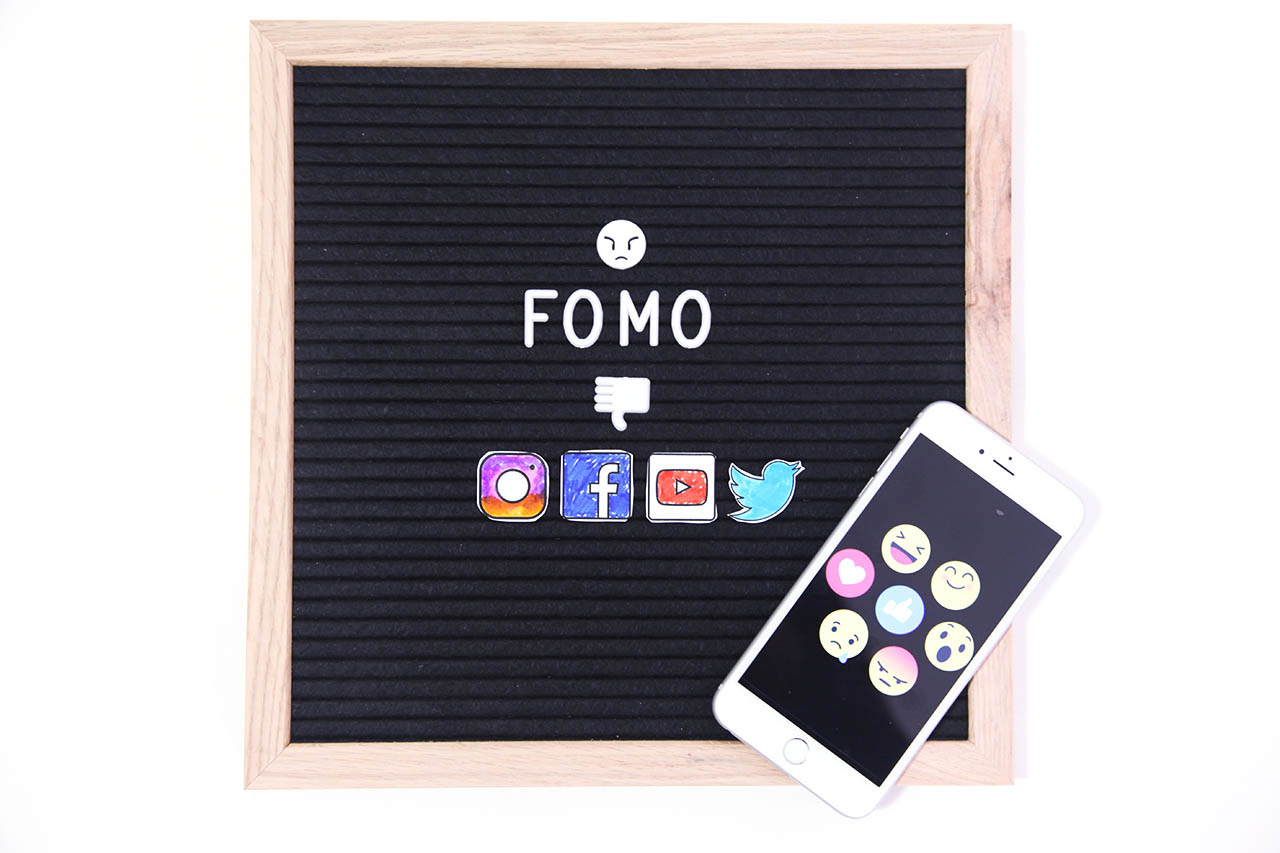
Feeling FOMO is one thing. Giving in to it is another. It’s no secret that friends who humblebrag their career accomplishments, exotic travels, luxury purchases, and perfect family lives are looking for social elevation in the form of likes, hearts, and retweets. Sure, give them a thumbs up, but stay strong. It’s not all real. Especially those perfect family lives.
Fighting FOMO
A site with an infinite scroll is bad for your soul, so limiting the time you spend on social media is a key to taming your emotional spending. Look at who you follow and ask yourself: “Does this person give me financial anxiety?” “Am I comparing my self worth to others?” If so, then unfollow or mute that feed.
Removing social apps like Facebook, Twitter, Instagram, and Pinterest from your phone is a solid way to kill the source of emotional bankruptcy, relativity bias, and social comparisons elevated through social media. Changing your online circles and social feeds can boost your relative happiness (and hopefully decrease FOMO) since your source of comparison is gone. Poof — you’re awesome again!
Speaking from relative experience, I’ve removed all social apps from all of my digital devices and I feel so much better. I really do.
Lastly, before making a reactive purchase online, give yourself a full 24 hours to get over the FOMO feeling – you’ll often feel less compelled to make an emotional purchase a day later. Need a reality check or a laugh? Go ahead and add up the cost of all the stuff on a coveted feed — you can use my track spending tools — chances are that friend or influencer can’t afford all that fancy stuff either.
Remember: Infinite scroll is bad for your soul (and bank account)!
Love love love,
Kerry
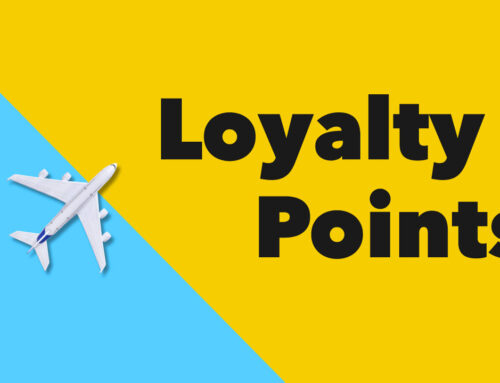
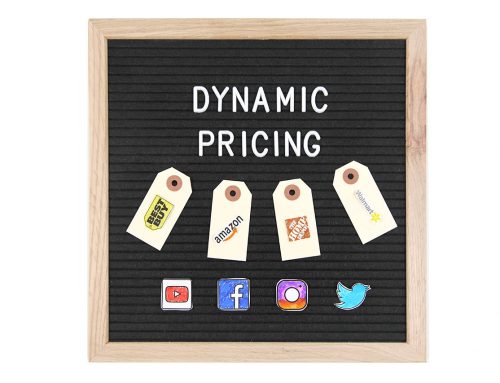
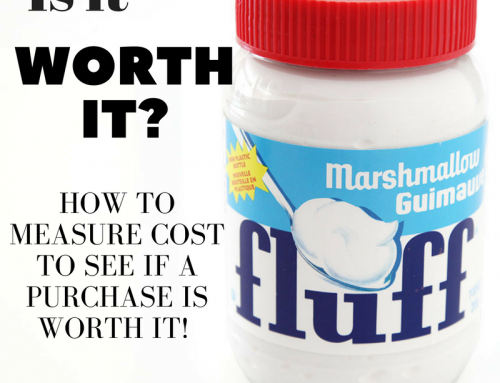


I don’t actually understand the FOMO shopping. I occasionally factor in what I’ve seen on the web into my decisions about where to travel, but day to day not at all.
Also, you mentioned a $4500 credit card balance. Hopefully you meant a “balance until the bill is due”. Anyone paying interest on that balance has bigger problems than FOMO.
I cannot agree more! Great tips! I’ve been practicing the taking a step back and thinking if I really need/want it approach too
FOMO? Nah, I know what I’m missing out. And I really don’t care… because I ALWAYS analyse and determine 1) Do I need it? (rather than want it) and 2) Can I afford it? And what is the opportunity cost of doing so.
If I need it and can’t afford it then I find alternatives in the interim. Sometimes that alternative is creating with my own hands a device that does the trick. Might not look flashy like the store bought items ( aka plastiky crap) but if it works, well it works
But I also don’t subscribe to (anti)social media. Why would I? Really, I’d have 7 million friends? Yeah right. I saw ALL the problems inherent when the epitome of (anti)social medida was Bebo and MySpace.
My wife however subscribes to Fakebook and others. Sick and tired of “Look, I can get a Samsung Galaxy 9 for $3” etc. And yes she was going to click on the link via her oppo cell phone. Unbelievable how STUPID people can be. Is that grounds for divorce???
“How social media and FOMO wire you to get broke” 😀
Really interesting article full of facts we don’t realise.
#FOMO is a huge problem! I’ve fallen prey to it many times. It takes time and practice to keep yourself from getting sucked in. I too finally gave up all my social media accounts and it felt amazing! Keep up the great work!
It’s so funny because on Social Media, it looks like:
Everyone is rich
Has it altogether
No student loans
Eating the best meals
But for some reason, there is nearly $1,000,000,000,000 worth of student loan debt, high credit card debt and more. Something isn’t adding up. I agree, you must give yourself a time limit on Social Media. One way is to adjust your screen limit settings on your phone.
Consumerism is wreaking havoc on our world, and not just from a financial perspective. Think of the all the unwanted junk consumers are buying because FOMO or other big corp tactics or social media convince us we need this newest, latest, greatest gadget or toy or what have you. I went for a walk with our pup last night, and was literally shocked at the number of houses who have gone WAY over the top with their outdoor Christmas decor. From blow up characters to full on light shows which paint the house in an array of garish green dots, I couldn’t help but think of how consumerism has forced us to out do our neighbours, to put on the best show. For what? And at what cost? The environment is not thought of, that’s for sure. The amount of electricity we are wasting and the light pollution is stupefying. Then what happens to all that unwanted, broken, defunct stuff after it becomes untrendy? It gets dumped in a land fill. Nicely done humans.
This is actually very true. Sometimes, I wonder whether the era of social media has made the world richer or poorer? 🤔